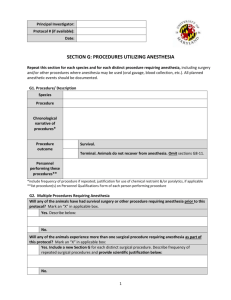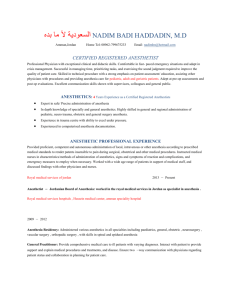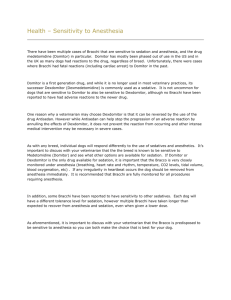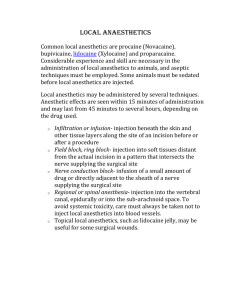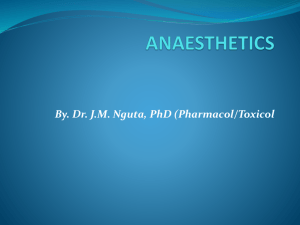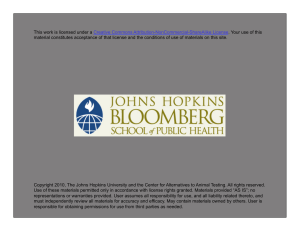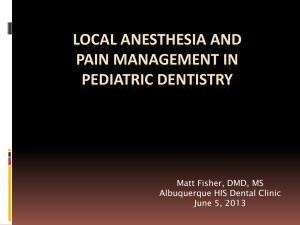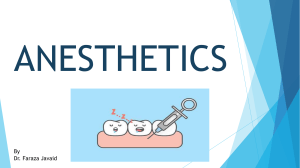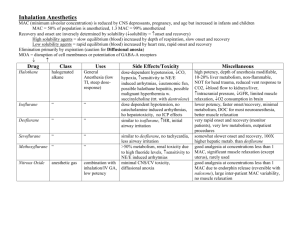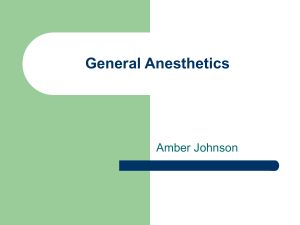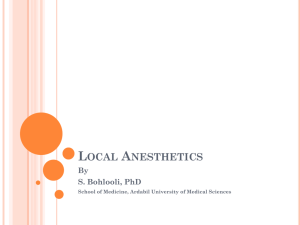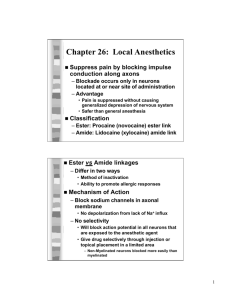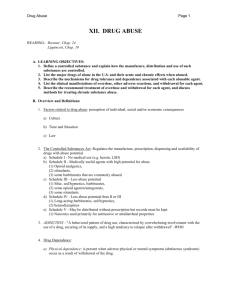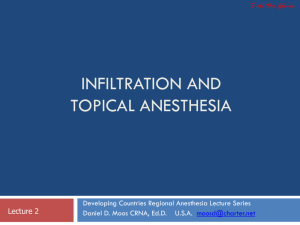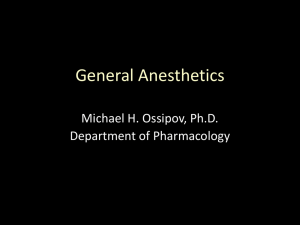F. Anesthetics, Analgesics, Etc.
advertisement
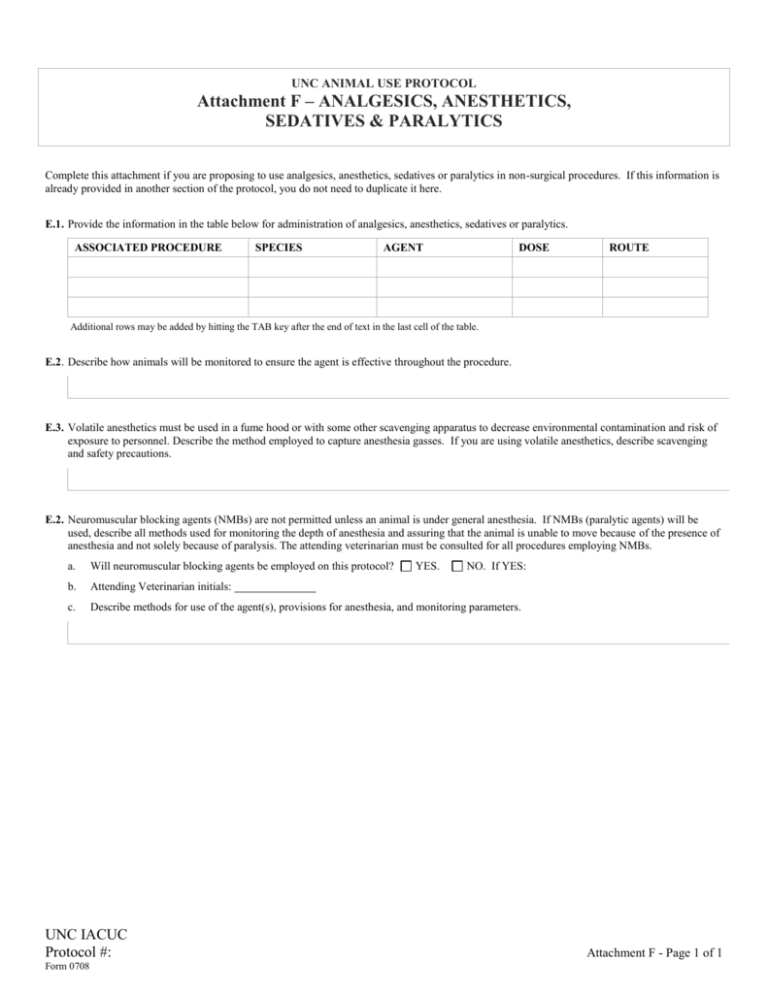
UNC ANIMAL USE PROTOCOL Attachment F – ANALGESICS, ANESTHETICS, SEDATIVES & PARALYTICS Complete this attachment if you are proposing to use analgesics, anesthetics, sedatives or paralytics in non-surgical procedures. If this information is already provided in another section of the protocol, you do not need to duplicate it here. E.1. Provide the information in the table below for administration of analgesics, anesthetics, sedatives or paralytics. ASSOCIATED PROCEDURE SPECIES AGENT DOSE ROUTE Additional rows may be added by hitting the TAB key after the end of text in the last cell of the table. E.2. Describe how animals will be monitored to ensure the agent is effective throughout the procedure. E.3. Volatile anesthetics must be used in a fume hood or with some other scavenging apparatus to decrease environmental contamination and risk of exposure to personnel. Describe the method employed to capture anesthesia gasses. If you are using volatile anesthetics, describe scavenging and safety precautions. E.2. Neuromuscular blocking agents (NMBs) are not permitted unless an animal is under general anesthesia. If NMBs (paralytic agents) will be used, describe all methods used for monitoring the depth of anesthesia and assuring that the animal is unable to move because of the presence of anesthesia and not solely because of paralysis. The attending veterinarian must be consulted for all procedures employing NMBs. a. Will neuromuscular blocking agents be employed on this protocol? b. Attending Veterinarian initials: c. Describe methods for use of the agent(s), provisions for anesthesia, and monitoring parameters. UNC IACUC Protocol #: Form 0708 YES. NO. If YES: Attachment F - Page 1 of 1
